The 38 Automatic Colt Pistol Super cartridge isn’t our most popular handgun cartridge, but in the loyalty of a small following it is unique. The 38 ACP Super must be understood as to its potential. All modern loads are marked 38 ACP Super +P, but all loads are in the same pressure range of safety demanded by the SAAMI, despite very different performance. Many are loaded below the potential of the cartridge.
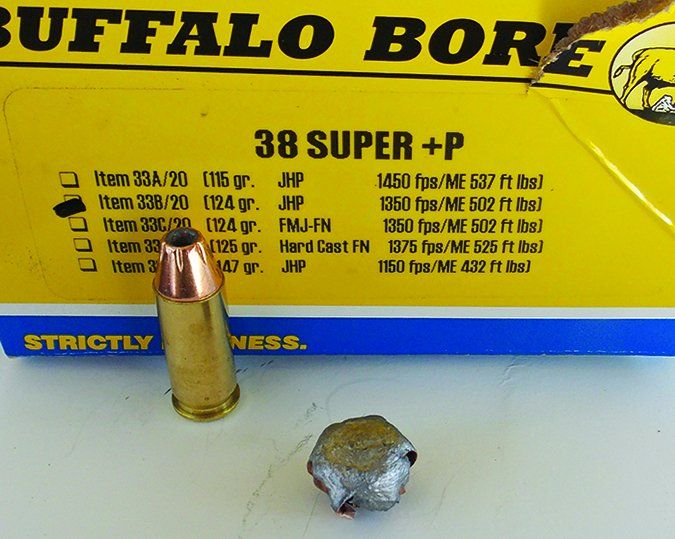
The 38 ACP, introduced in 1900, is no longer in regular production. This is because the original 38 ACP, introduced in 1899, was later upgraded to the powerful 38 ACP Super. Though the cartridge-case dimensions are identical, the Super is the much hotter cartridge. Modern SAAMI standards called for the 38 Super to be labeled 38 ACP Super +P, which is confusing. While some of the modern loads are hotter than others, all are safe for a 38 ACP Super handgun in good condition. The old double-link Colt 38 ACP self loaders should never be fired with Super loads.
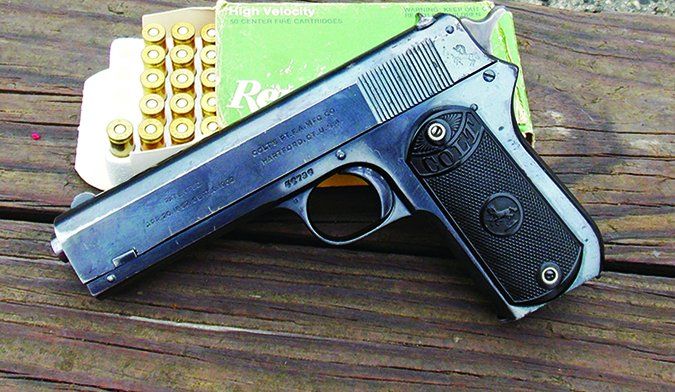
The 38 Super was once a handloading proposition for maximum performance. Using 9mm JHP bullets and sometimes heavy hard-cast 38 Special lead bullets, handloaders upgraded the 38 Super. The 115-grain JHP was jolted to 1400 fps or beyond. Today Cor-Bon, Buffalo Bore, and Double Tap offer high-performance loads rivaling some of the hotter handloads of yore. The 38 Super may be enjoying an upsurge in popularity as both Federal Cartridge Company and SIG Sauer have introduced new JHP loads for it. We were able to find 12 personal-defense loads and four FMJ loads. For all the testing, we fired the rounds out of a Rock Island Armory 1911, a reliable and affordable 38 Super launchpad. It’s a standard Government Model steel-frame pistol with 5-inch barrel.
38 Super Load Performance Data
| Rock Island Armory 1911 w/ 5-in. barrel | Average Velocity (fps) | Muzzle Energy (ft.-lbs.) | Average Accuracy (in.) | Power Factor (pf) | Expanded Width (in.) | Retained Weight (gr.) | Penetration in Water (in.) |
| SIG Sauer 125-gr. FMJ | 1190 | 393 | 2.2 | 148 | .357 | 125/100% | 24+ |
| Fiocchi 129-gr. FMJ | 1155 | 382 | 1.9 | 149 | .357 | 129/100% | 24+ |
| Winchester 130-gr. FMJ | 1160 | 388 | 3 | 150 | .357 | 130/100% | 24+ |
| Prvi 130-gr. FMJ | 1189 | 408 | 4 | 154 | .357 | 130/100% | 24+ |
| Cor-Bon 100-gr. PowR’Ball | 1336 | 396 | 3 | 134 | Frag | 30/30% | 10 |
| Cor-Bon 115-gr. JHP | 1371 | 479 | 2.5 | 158 | .68 | 99/86% | 13 |
| Cor-Bon 125-gr. DPX | 1260 | 440 | 2.2 | 160 | .62 | 125/100% | 18 |
| Buffalo Bore 115-gr. JHP | 1421 | 515 | 2.25 | 163 | .55 | 100/87% | 18 |
| Buffalo Bore 124-gr. JHP | 1290 | 458 | 1.9 | 160 | .64 | 124/100% | 19 |
| Buffalo Bore 147-gr. JHP | 1099 | 394 | 2.2 | 161 | .54 | 147/100% | 24 |
| Double Tap 115-gr. JHP | 1419 | 515 | 2.6 | 163 | .50 | 55/48% | 13 |
| Double Tap 115-gr. TAC | 1366 | 476 | 2.4 | 157 | .63 | 115/100% | 18 |
| Double Tap 125-gr. JHP | 1402 | 545 | 2.1 | 175 | .81 | 124/99% | 16 |
| Federal AE 115-gr. JHP | 1198 | 366 | 2.25 | 137 | .55 | Frag 84/73% | 9 |
| SIG Sauer 124-gr. V Crown | 1203 | 398 | 1.9 | 149 | .60 | 124/100% | 14 |
| Winchester 125-gr. Silvertip | 1190 | 393 | 2.4 | 149 | .62 | 122/98% | 16 |
| Notes: Average Velocity and standard deviation readings were obtained by firing four five-shot strings over a Competition Electronics Pro Chrono. Ambient temperature: 86 degrees. Elevation: 815 feet above sea level. l The accuracy figures are the average of two five-shot groups. For accuracy, we fired the test gun from a benchrest at a 15-yard target. l To calculate IPSC power factor, multiply bullet weight in grains by the velocity in fps, then divide by 1000. l The retained-weight column shows the recovered bullet weight as a percentage of the actual bullet weight. | |||||||
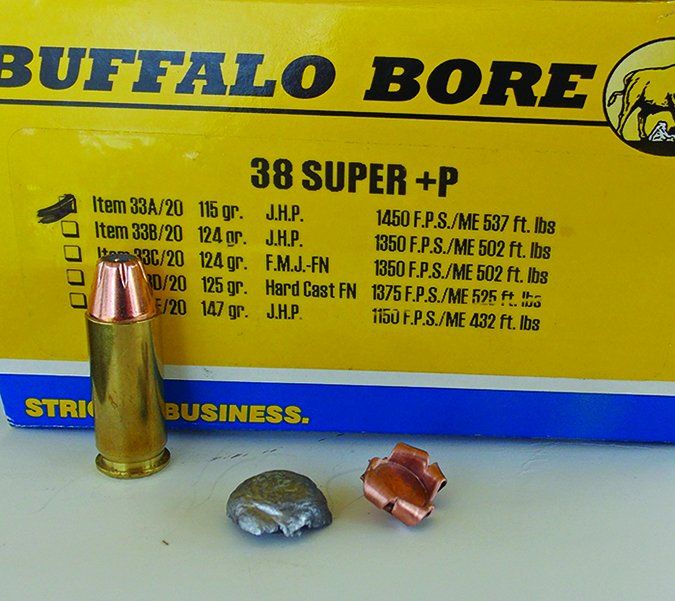
First, we tested the full-metal-jacket loads for use in competition and general shooting. We recorded basic accuracy, velocity, and energy for these rounds, but as you’ll see in the accompanying table, their widths, weights, and penetration readings are all the same. The FMJs didn’t expand, didn’t shed weight, and shot through our water-jug lineup, putting them at +24 inches, penetration beyond what we recommend for self-defense.
The Fiocchi 129-grain FMJ cost us $22.25/50 at Luckygunner.com and proved to be the most accurate by a margin, with a clean burn and excellent overall performance. It is the Best Buy for accuracy and economy. The SIG Sauer 125-grain FMJ loading ($23/50 at Ableammo.com) was close behind the Fiocchi loading, with little real difference other than price. While the Prvi Partizan 130-grain FMJ was less expensive ($20.75/50 at Bulkammo.com), it did not burn as cleanly nor was it as accurate. The Winchester 130-grain FMJ was the most expensive at $31/50 from TargetsportsUSA.com, and it was middle of the pack in terms of performance. Accordingly, we’d rate the Fiocchi as an A, the SIG an A-, the Prvi Partizan a B, and the Winchester a B-.
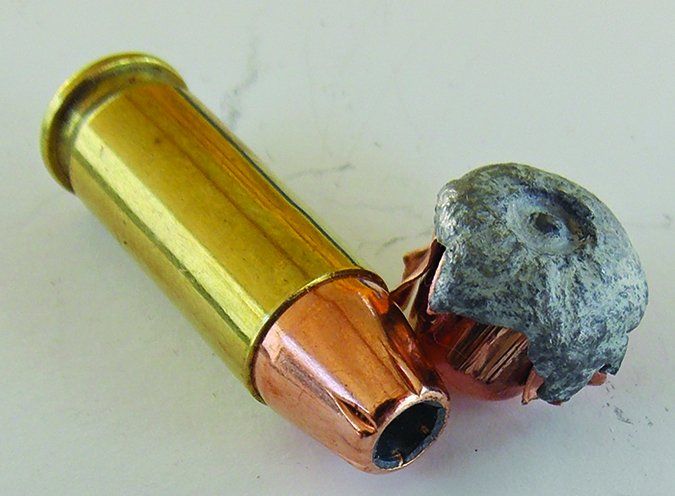
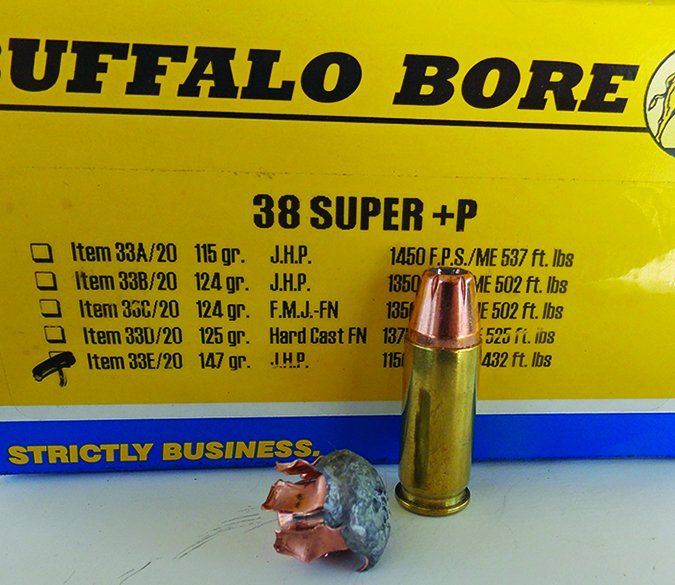
We looked for what we always look for in personal-defense loads. This is reliability first, then accuracy, a clean powder burn, and a good balance of penetration and expansion. We prefer a load that penetrates and expands over a load that fragments. In the 38 Super, there were loads that penetrated well but also fragmented, and we had to give them a passing grade based on penetration. The full-power 38 Super is similar to the 357 Magnum with 110- to 125-grain bullets, but the Super is much more controllable and has less muzzle blast and recoil. Relatively small charges of fast-burning powder create less recoil energy than larger charges of slow-burning powder.
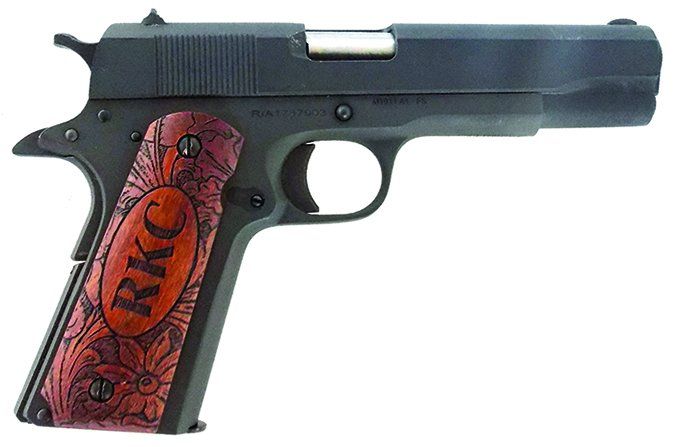
Even the fastest loads did not create muzzle flash and blast as sometimes seen with the 357 Magnum. The 38 Super isn’t in the class with the 357 Magnum as far as heavy hunting loads, and the Magnum at its best will beat the 38 Super, but with factory defense loads, the two are comparable, with the 38 Super having the advantage in some cases. For your convenience, we have added the 357 Magnum results panel from earlier this year so you can compare the loads.
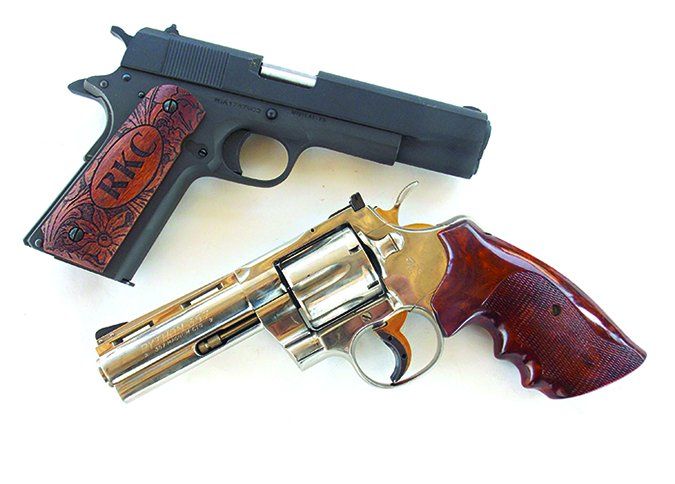
We were able to test three loads from Buffalo Bore. These included 115-, 124-, and 147-grain loads. All of these used the Hornady XTP bullet, a proven projectile for obtaining excellent penetration and expansion. These bullets were designed for the 9mm Luger, and things get interesting when the bullet is supercharged by 200 fps. As an example, one rater noted he was no enthusiast concerning the 147-grain load, but that was before it was tested. Here are the results round by round:
Buffalo Bore 115-gr. JHP
We bought this for $28.79/20 rounds at Buffalobore.com. This load came out of the Rock Island’s 5-inch barrel at an average of 1421 fps. Muzzle signature was limited and function was excellent. This load penetrated an average of 18 inches with good expansion. We saw something we have never seen before with the XTP bullet, including running a 90-grain 9mm XTP at 1600 fps in a 38 Super handload. The XTP bullet core and the jacket separated in two of three water-jug tests. Penetration, however, was not compromised.
GUN TESTS GRADE: A
Buffalo Bore 124-gr. JHP
We bought this for $28.79/20 rounds from Buffalobore.com. The 124-grain XTP never fragmented or separated. Function was good and accuracy was the best of the test for these high-performance loads. The balance of expansion and penetration is ideal, with a solid 19 inches of penetration. While the 115-grain Buffalo Bore loading is a good, strong 38 Super loading, we liked the performance of the 124-grain better. Accuracy is as good as any of the other high-performance loads and better than most.
GUN TESTS GRADE: A
Buffalo Bore 147-gr. JHP
We also bought this at Buffalobore.com for $28.79/20 rounds. This is the heaviest load in the test. While high velocity is exciting, a 147-grain bullet at 1099 fps is interesting. This is about 100 fps faster than most 9mm loads in this bullet weight. A valid comparison one rater made is that the 9mm is a 38 Special, while the 38 Super is a 357 Magnum. The 38 Super isn’t a Magnum, but the cartridge actually has more velocity and energy than many 357 Magnum personal defense loads, particularly when they are fired in personal-defense handguns with abbreviated barrels. The 147-grain XTP load penetrated a deep 24 inches in water. This is the greatest penetration of any load tested. For those living in a climate in which heavily clothed attackers are the rule, this heavy 38 Super has much promise. We would choose a 124-grain for most needs, but for what the 147-grain load is designed to do it cannot be faulted.
GUN TESTS GRADE: A
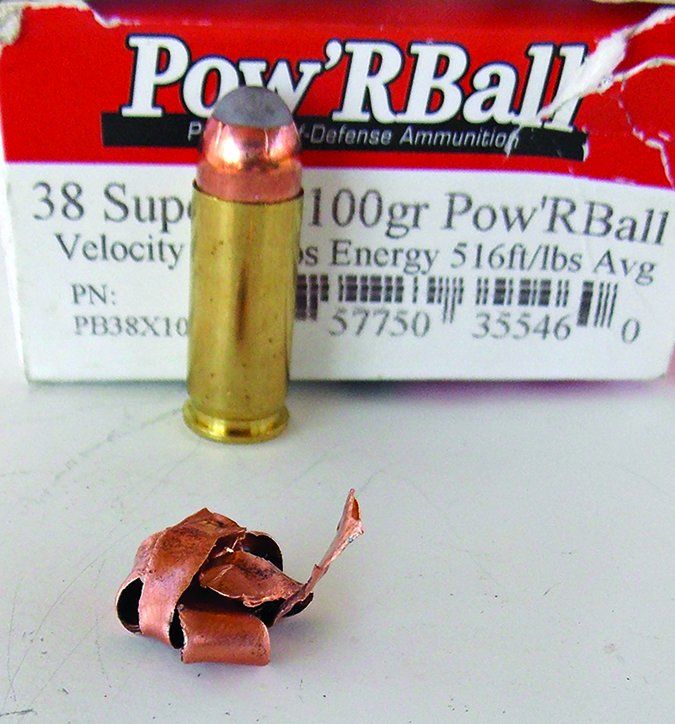
Cor-Bon 100-gr. Pow’RBall
We bought this round for $15/20 at Surplusammo.com. We were able to test three Cor-Bon loads. The first was the 100-grain Pow’RBall. This is a hollowpoint with a polymer ball in the nose. This bullet is designed to feed in any handgun that will feed ball ammo. The polymer ball is driven into the bullet to instigate expansion.
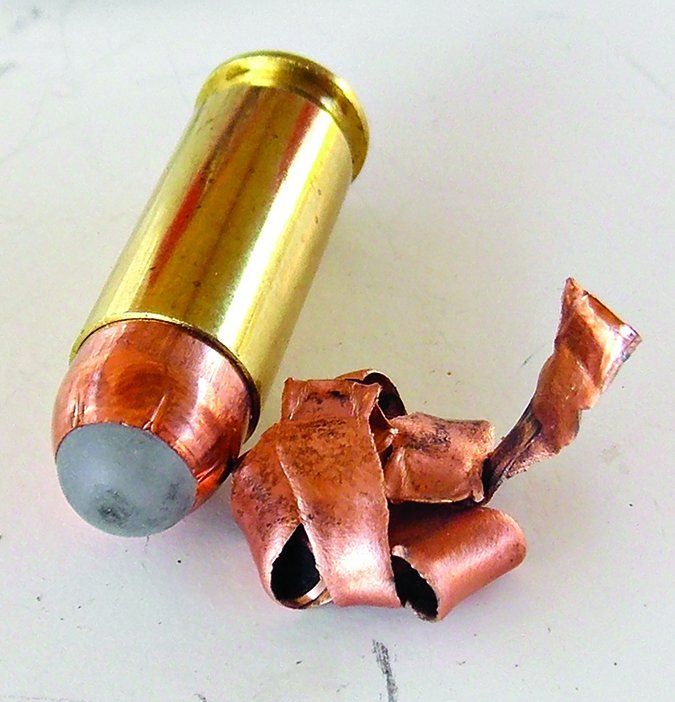
Our senior rater has written three books on the 1911 and regards the 38 Super as more feed reliable than the 45 ACP or 9mm 1911, and the Pow’RBall load does not detract from that opinion. This load isn’t as fast as the last lot we tested. At 1336 fps, it is in 9mm territory. Control was good. Penetration was short at only 10 inches. We rated this load down based on poor penetration and because of its only fair accuracy. More penetration is needed for personal defense, in our opinion. For our shooters, there would have to be a particular need for frangible performance to choose this load.
GUN TESTS GRADE: C
Cor-Bon 115-gr. JHP
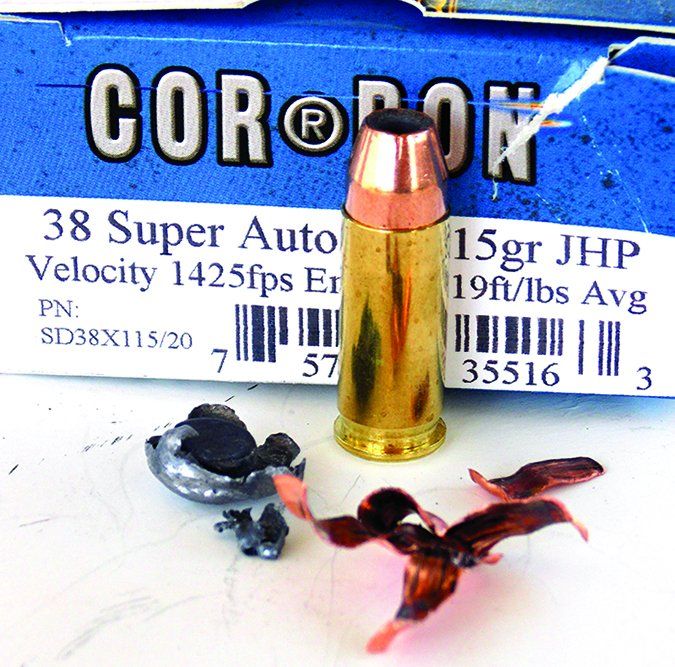
We bought this for $16.74/20 at CheaperThanDirt.com. The Cor-Bon 115-grain JHP broke 1372 fps on average. The bullet fragmented in 13 inches of water. Accuracy and feed reliability were good. We would have preferred this load not fragment. Just the same, this is a powerful loading with plenty of energy. The Cor-Bon 115-grain JHP offers power to maximize the 38 Super for personal defense and is superior to the average 110-grain 357 Magnum loading.
GUN TESTS GRADE: B
Cor-Bon 125-gr. DPX
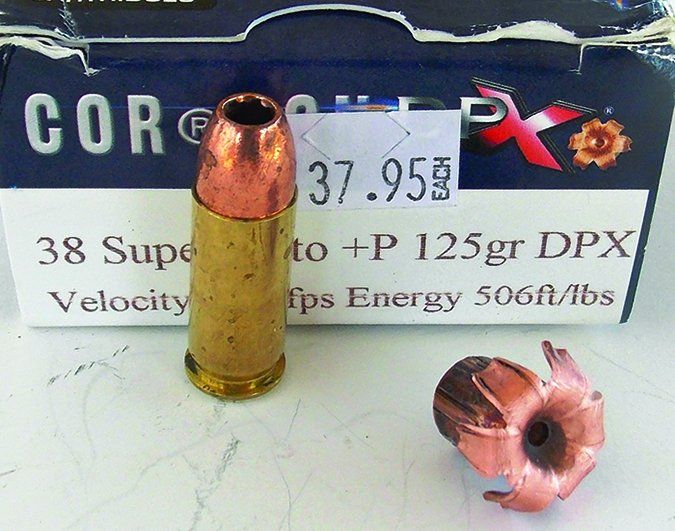
This cost us $37.95/20 at a Cabela’s, making this the most expensive load by a mile. It was also the most accurate Cor-Bon load and one of the most accurate tested. The all-copper bullet expanded well, maintaining good penetration. At 1260 fps, the Cor-Bon load penetrated 18 inches of water and gave good expansion. There is nothing to fault at that level of performance. It is an acceptable defense loading compared to the other loads and is an excellent all-round 38 Super loading. No 9mm +P equals this level of performance. It is expensive like all loads using the Barnes X Bullet.
GUN TESTS GRADE: A
Federal American Eagle 115-gr. JHP
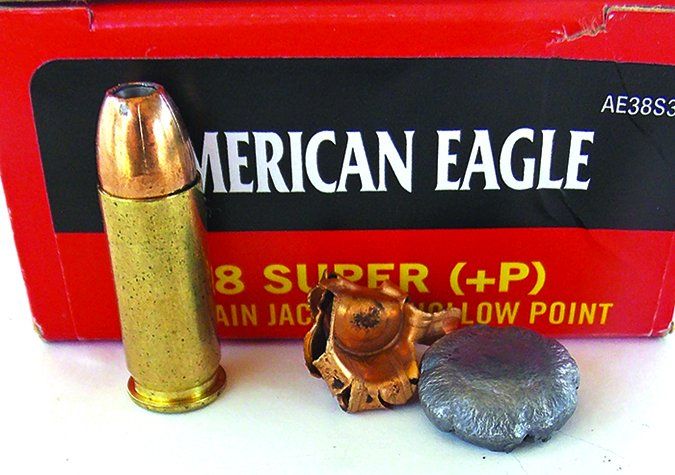
We bought this for $23/50 at Ableammo.com. This is a recent introduction offered in 50-round boxes at a fair price. This is a great all-round practice load. Accuracy and economy are good. While anyone would be well advised to get out of the way of a 115-grain JHP at 1200 fps, this load is really in 9mm territory. We rated it down a grade based on low velocity and energy. However, you can curve it back up to an A if you want a training load. It isn’t as expensive as some ball ammunition, but if pressed into service, it offers 9mm performance for personal defense.
GUN TESTS GRADE: B
Double Tap 115-gr. JHP
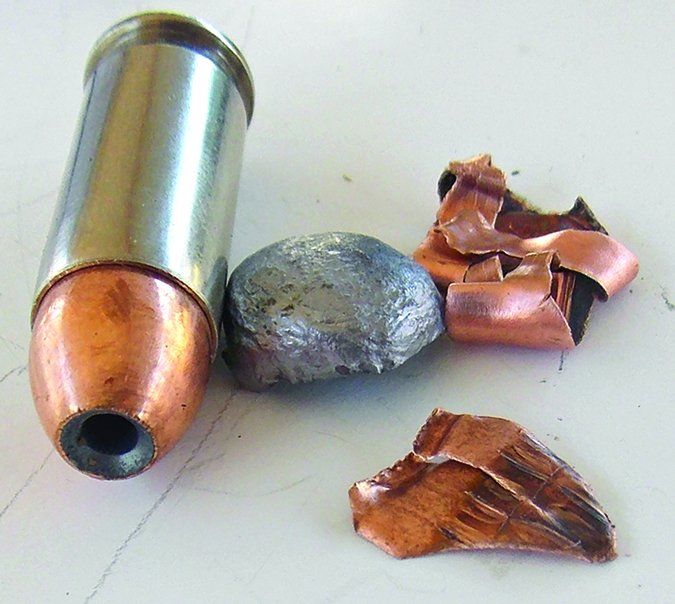
We bought this for $25.42/20 at Doubletap.com. We had to shake our heads and double-check the chronograph on this one, but the figures were correct. The Double Tap load averaged 1419 fps, while the Buffalo Bore load averaged 1421 fps, very close, but with different bullet designs and performance. The DT load has plenty of power and accuracy. The bullet fragmented and did not penetrate as much as some of the other loads, but it depends on the mission and preference. We noted something with this bullet. While other bullets that fragmented left a shard of jacket hanging in the water when the jugs were examined, the Double Tap bullet fragmented and some of the jacket shards were stuck in the side of the water jug. Some claim to like a fragmenting bullet because secondary shards are created that do damage beyond the bullet path. If you want that kind of performance, then this is your round.
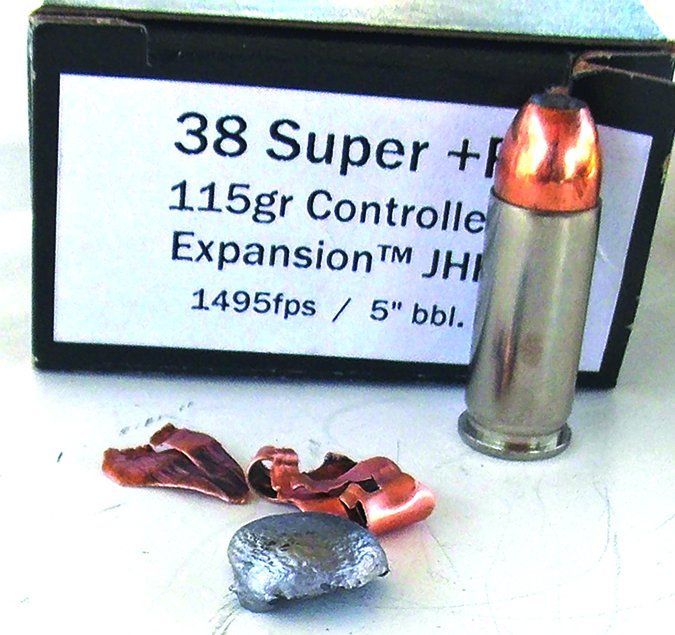
GUN TESTS GRADE: A
Double Tap 115-gr. TAC JHP
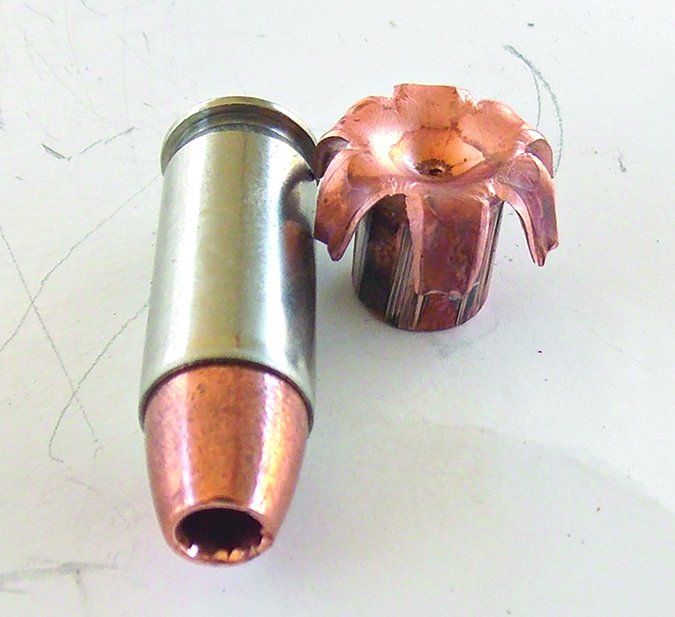
We bought this for $29.95/20 at Doubletap.com. This TAC load breaks 1366 fps. The all-copper bullet, due to its design and less weight for the bullet length, rides a bit deeper in the cartridge case than the standard JHP bullets and cuts into powder capacity. A good strong 9mm +P may break 1300 fps with a standard 115-grain JHP and 1200 fps with a TAC-type bullet. The DT TAC load offers an excellent balance of expansion and penetration. This is a viable personal defense choice many will prefer.
GUN TESTS GRADE: A
Double Tap 125-gr. Bonded JHP
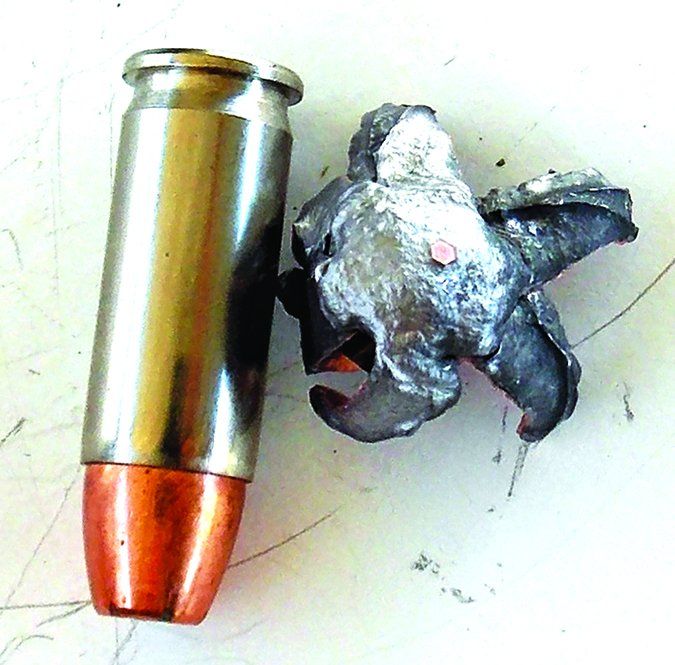
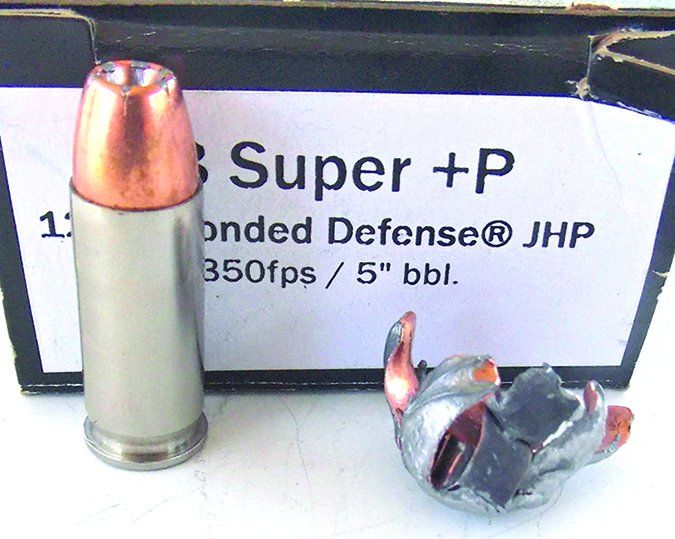
We bought this for $25.42/20 at Doubletap.com. This load breaks an average of 1402 fps and offers the greatest energy of any load tested. Expansion of the recovered bullet was also greater. Recoil was greater than the other loads. Accuracy was good and penetration and expansion good as well. For those wanting the most from their 38 Super, this load cannot be faulted. The bullet stayed together and expanded to more than .80 caliber after penetrating 16 inches of water.
GUN TESTS GRADE: A
SIG Sauer Elite 124-gr. V Crown JHP
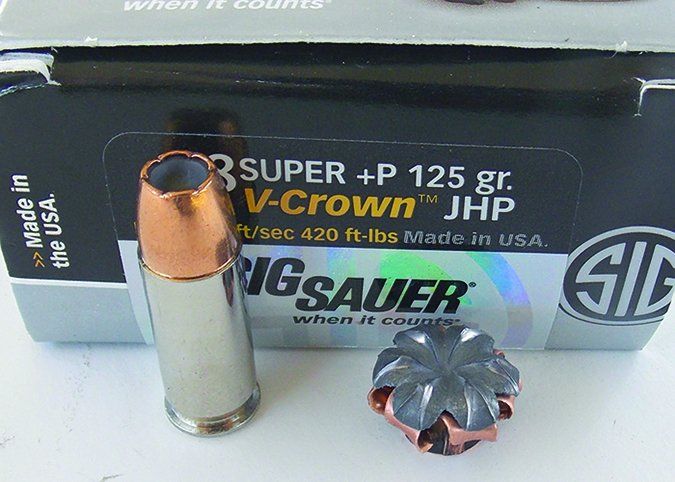
We bought this for $16/20 at Ableammo.com. SIG Sauer has recently entered the ammunition business, and the loads are making a hit with the public. This loading features the SIG V Crown hollow point and nickel-plated cartridge cases. Feed reliability and accuracy were good. This was the most accurate personal-defense load tested. The V Crown load breaks 1213 fps from the 5-inch-barrel RIA pistol. This is a good load for most uses, but it is not as strong as some of the other loads. Along with the best accuracy laurels, the SIG Elite load was the most affordable loading tested. We rated it down based on what was really 9mm +P performance compared to the other loads.
GUN TESTS GRADE: B
Winchester 125-gr. Silvertip
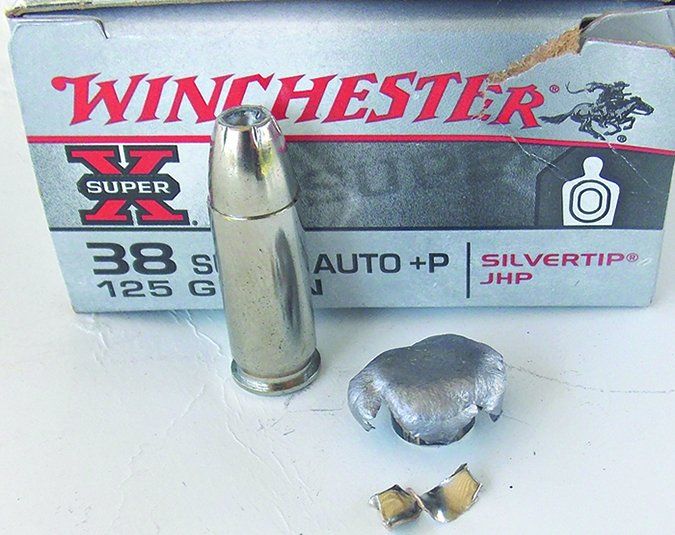
This cost us $49.70/50 at Ableammo.com. While this is a 50-round box, this ammunition is expensive, although at $24.85 per 25 rounds, it isn’t as expensive when broken up and compared to everyone’s else 20-round box. The Federal American Eagle load is much less expensive, as an example. The Winchester Silvertip is a standard 38 Super load that has been around a long time. Accuracy and feed reliability are good. Recoil is modest. This load uses a heavier bullet than the 9mm 115-grain Silvertip and velocity is perhaps 30 fps higher. It isn’t up to the full potential of the 38 Super, but some would prefer this load for control and accuracy.
GUN TESTS GRADE: B
Written and photographed by R.K. Campbell, using evaluations from Gun Tests team testers.

























